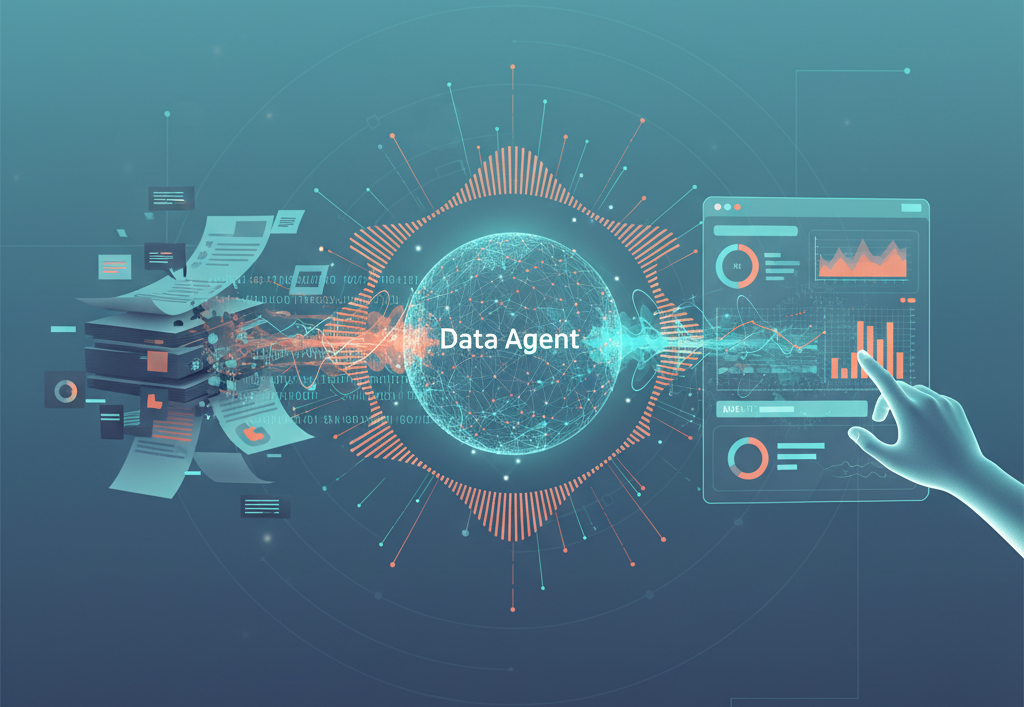In today’s fast-moving business environment, access to timely and trusted data isn’t a luxury—it’s a necessity. Yet, many organizations still struggle with delays and inefficiencies that slow down decision-making and create frustrating bottlenecks.
And we’re not talking about futuristic, real-time intelligence from IoT streams or advanced predictive models. The real challenge lies in something much simpler and more fundamental: quickly getting reliable insights from the operational databases that power the business every day.
The Challenges of Accessing Data
For many business users, accessing data often looks like this:
- Waiting for standardized reports that rarely answer the specific questions they have.
- Relying on SQL experts to query databases for anything beyond basic metrics.
- Depending on IT teams or analysts to interpret and deliver insights.
These dependencies not only waste time but also mean insights often arrive too late to drive meaningful action. The result? Decisions are delayed, opportunities are missed, and teams remain dependent on technical intermediaries.

A New Approach: Conversational Access to Data
Now imagine an alternative.
Instead of waiting days or weeks for reports, a business user simply asks a question in natural language—and instantly receives a trusted, contextual answer.
With Data Agents, business leaders, analysts, and frontline teams can access the insights they need without writing SQL, without relying on IT, and without waiting for the next reporting cycle.
✅ No SQL required.
✅ No long waits.
✅ Empowering every team with self-service analytics.
The result? A truly data-driven culture—where decision-making is faster, smarter, and no longer bottlenecked by technical dependencies.
Building Trusted Data Agents: More Than Just Turning on a Feature
Creating a Data Agent that delivers reliable, trusted insights at scale requires more than enabling a new capability. It’s a thoughtful process that involves planning, preparation, and continuous improvement.
Here’s what it takes to do it right:
1. Planning and Cost Considerations
Before starting, define clear goals and high-value use cases. What business problems should your Data Agent solve first?
Cost planning is equally important. Beyond technology setup, factor in data preparation, governance, infrastructure, and ongoing support. While a well-designed Data Agent can reduce downstream costs by freeing up analyst time, it requires a strategic upfront investment.
2. Data Preparation
A Data Agent is only as good as the data it accesses. Clean, transform, and organize datasets before connecting them—eliminating duplicates, standardizing formats, and ensuring completeness to prevent misleading or partial answers.
3. Metadata Enrichment
Context gives data meaning. Enrich your datasets with metadata—such as descriptions, data lineage, and business glossary terms—so the Data Agent can interpret questions accurately and respond in the right business context.
4. Modelling and Design
Robust data models define how entities and metrics relate to one another. Without them, responses can be fragmented or inconsistent. Well-designed semantic models ensure Data Agents deliver intuitive, business-aligned insights.
5. Defining Agent and Data Source Instructions
Think of this as training your Data Agent. Defining roles, rules, and boundaries ensures the Agent interprets user intent correctly and queries only relevant, authorized data sources. This step is crucial for maintaining accuracy and consistency.
6. Security and Governance
Empowering self-service doesn’t mean compromising on control. Implement role-based access, data masking, and compliance checks so users only see what they’re authorized to view. Strong governance ensures long-term trust and consistent data quality.
7. Delivery and Deployment Strategy
Deploying a Data Agent is about bringing insights to where users already work.
That could mean embedding it in Microsoft Teams, integrating it into web portals, creating dedicated self-service pages, or exposing it as an API for broader use. A phased rollout works best—start with a high-impact use case, demonstrate value, and scale from there.
8. Maintenance and Monitoring
A Data Agent is not “set and forget.” It needs continuous refinement—validating responses, updating data models, improving performance, and tracking metrics like query accuracy, response time, and user adoption.
9. User Feedback and Continuous Improvement
User trust is earned over time. Actively gather feedback from business users to identify misunderstood queries or gaps in data coverage. Continuous iteration ensures your Data Agent evolves alongside your organization.
10. Scalability and Improvement Loops
As adoption grows, your Data Agent should expand to new data domains and evolve its intelligence. A mature Agent doesn’t just answer questions—it starts surfacing new opportunities and insights proactively.
The Path to a Self-Service Data Culture
When organizations invest in building Data Agents the right way, the impact is transformative:
- Business users gain instant, contextual insights at their fingertips.
- Analysts focus on strategic analysis instead of ad-hoc report requests.
- Leaders make smarter, faster decisions based on trusted data.
In short, Data Agents unlock a true self-service data culture—where insights flow freely to the people who need them, when they need them.
How to Get Started?
Start small, scale fast.
Begin with a focused use case that delivers quick wins and measurable value. Validate trust, refine the Data Agent, then expand across teams and functions.
At SNP Technologies, we’re helping organizations set up their own Data Agents in Microsoft Fabric—making data more accessible, reliable, and actionable than ever before.
If you’re ready to empower your teams with instant, trusted insights, let’s connect.





